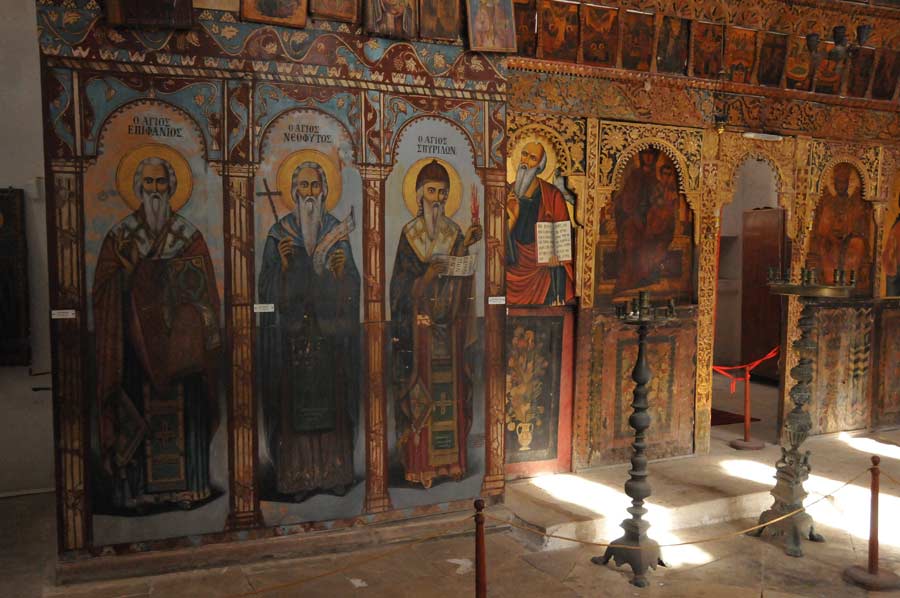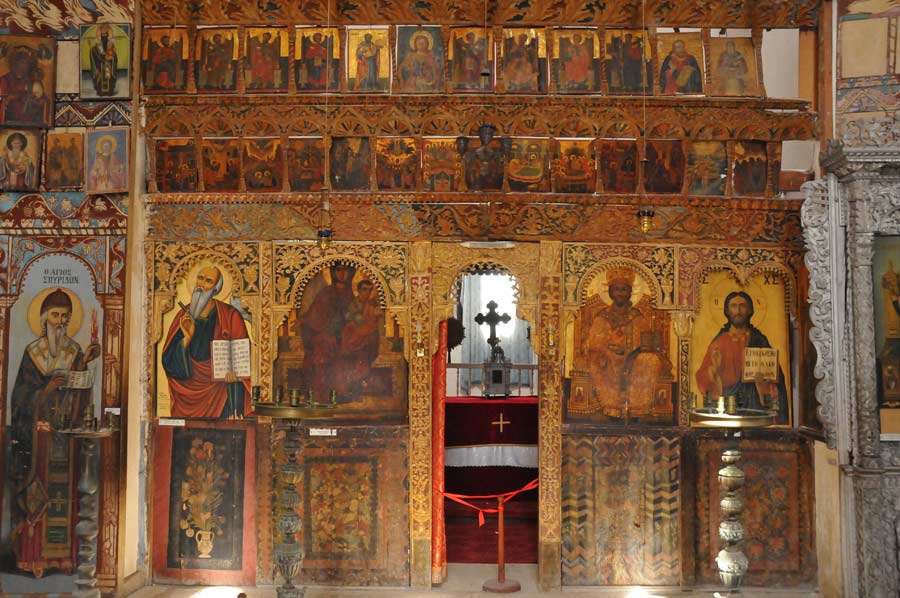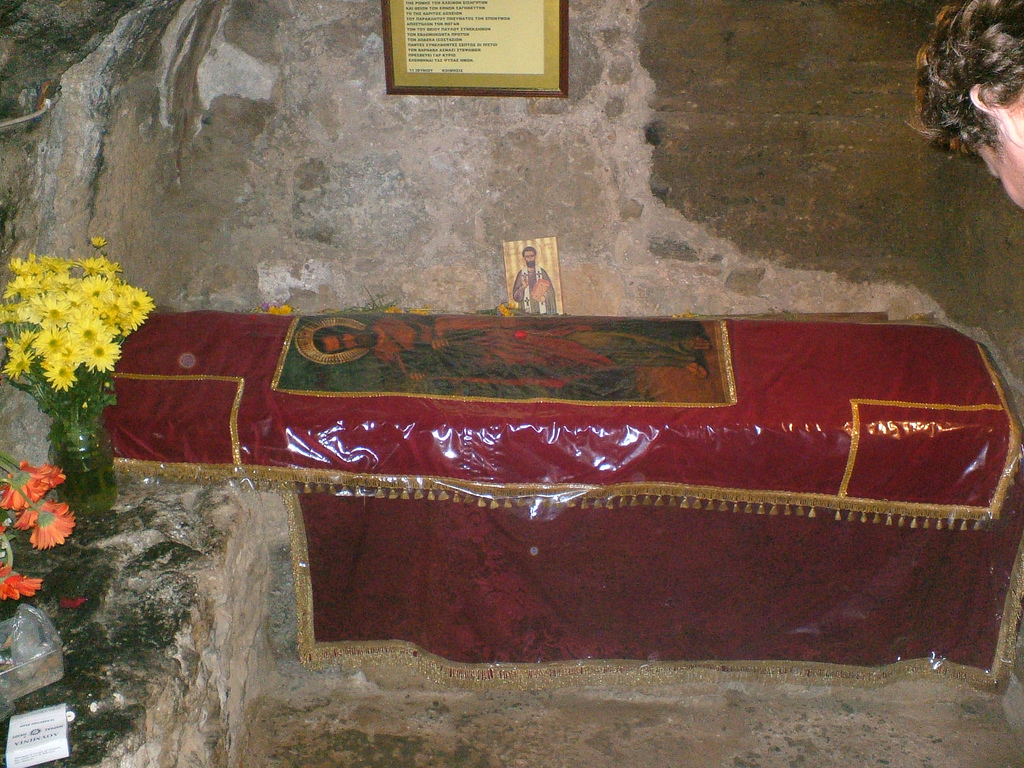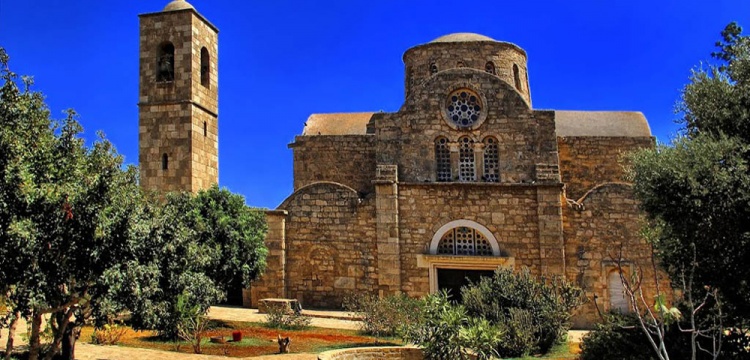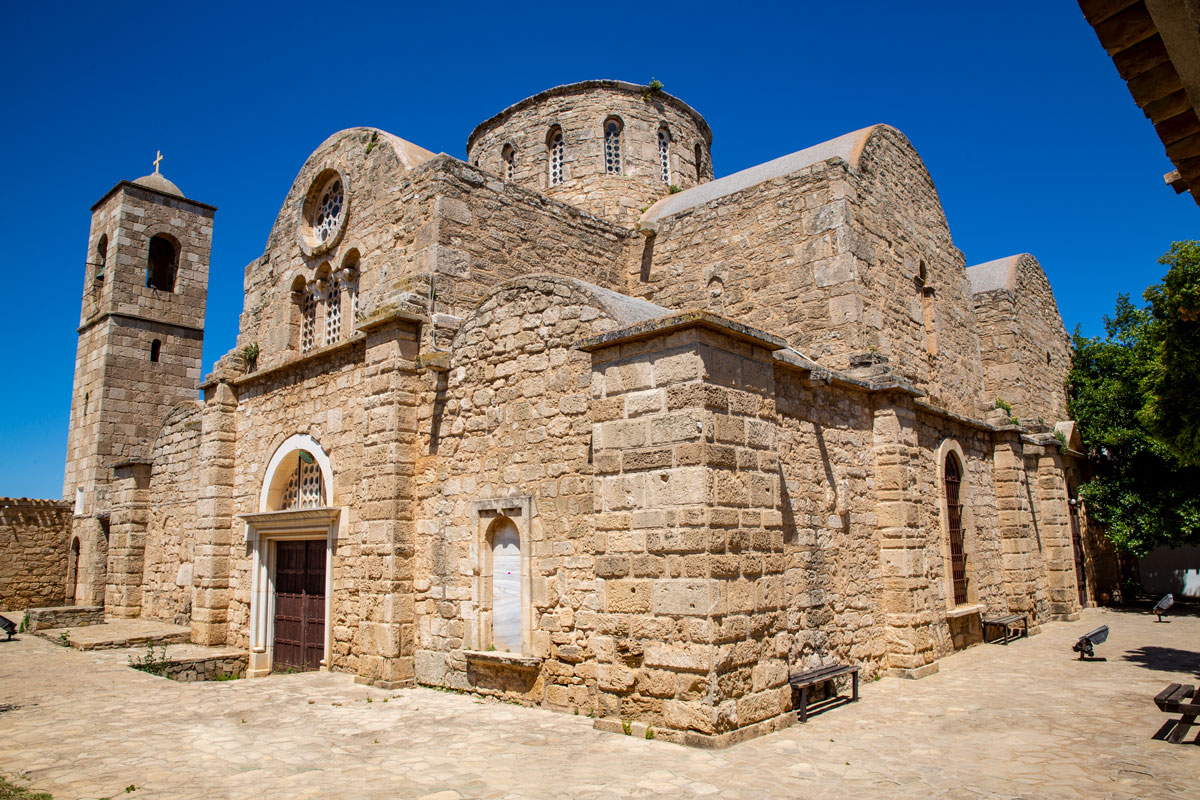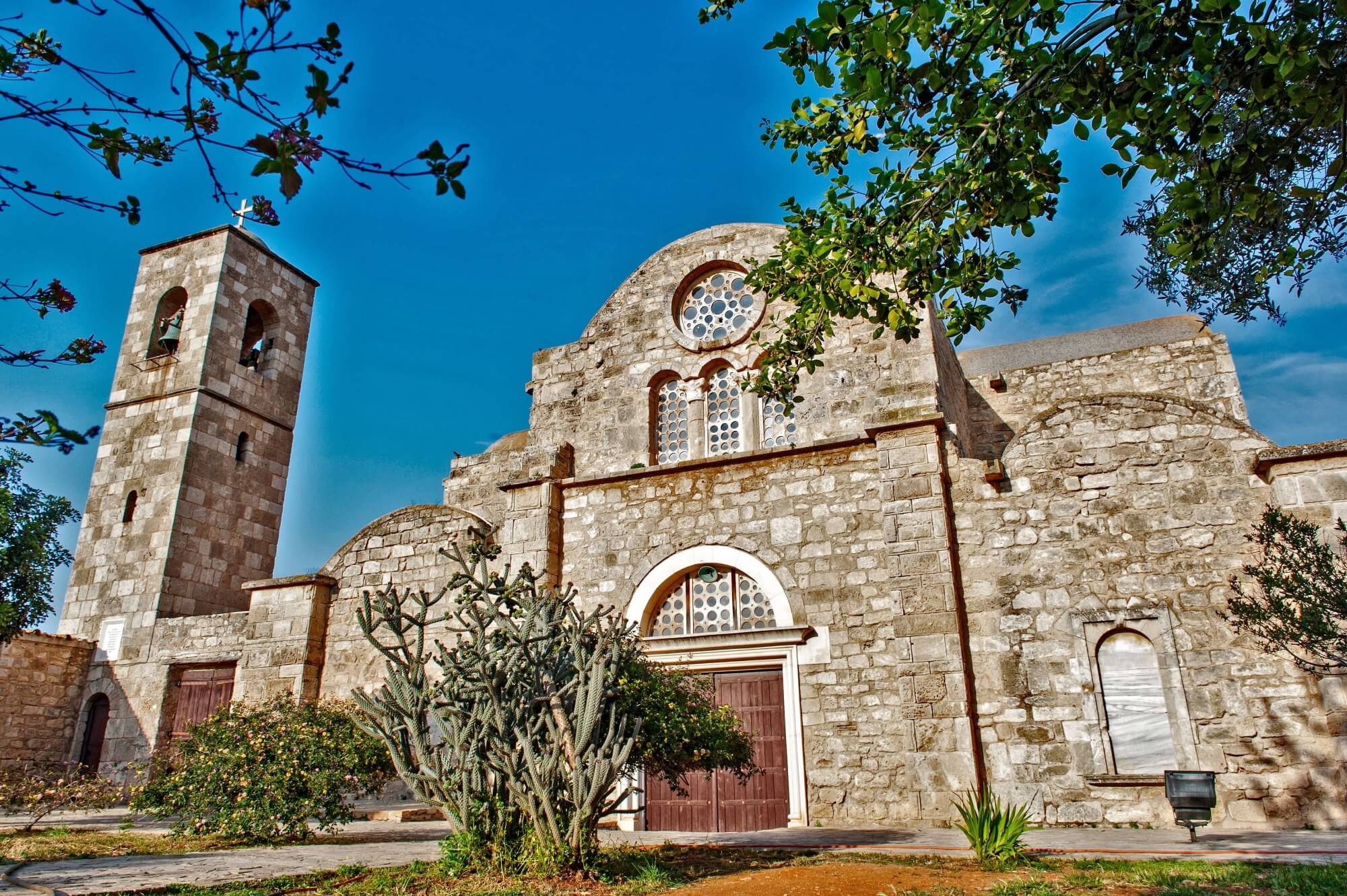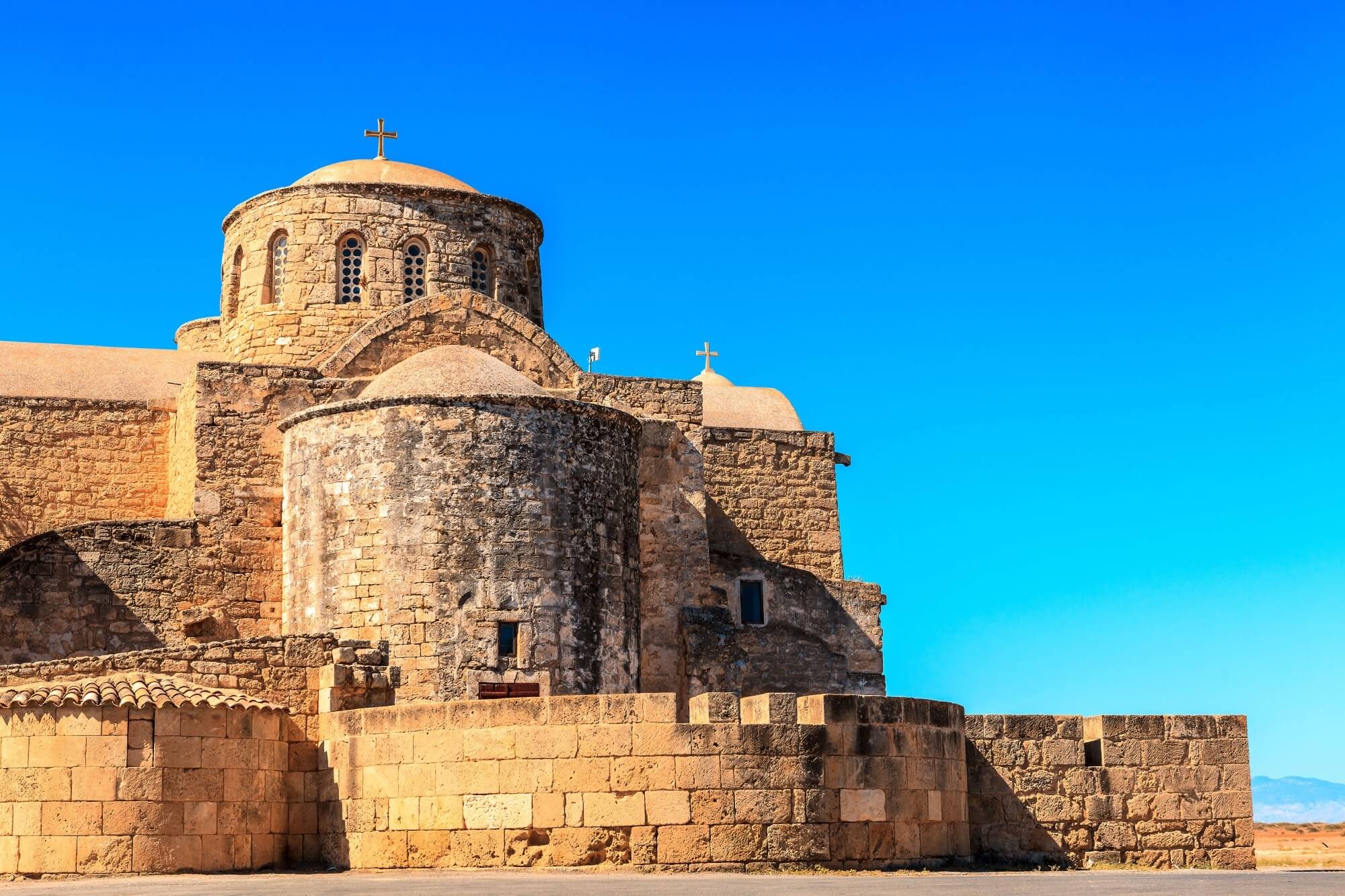Saint Barnabas Monastery
Places
A Must-Visit Destination in North Cyprus
You’re always up for an adventure. You love finding new places to explore, especially ones with an air of mystery. Well, it doesn’t get much more mysterious than the ancient Saint Barnabas Monastery in Northern Cyprus. This fascinating site is chock full of history just waiting to be discovered. Strap on your hiking boots and grab your camera, because this adventure will take you through crumbling ruins and sacred sites that have been around for centuries. You’ll learn all about the mysterious monk Saint Barnabas and the legends surrounding this place. From ancient artifacts to breathtaking views, this Northern Cyprus destination will give you an unforgettable experience. So come along for the journey as we dive into the rich history and intrigue of the Saint Barnabas Monastery. This is one travel tale you don’t want to miss!
History and Significance of the Saint Barnabas Monastery
The Saint Barnabas Monastery was founded in the late 5th century, and financed by the Byzantine Emperor Zeno. The original shrine church on the site was built to honor Saint Barnabas, a Cypriot Jew who converted to Christianity and traveled with Saint Paul spreading the Gospel.
A Place of Pilgrimage
For centuries, the monastery was an important place of pilgrimage. Saint Barnabas’ remains were interred at the site, and his tomb became associated with miracles. The monastery grew wealthy from donations, with monks and pilgrims traveling from across Europe and the Middle East.
A Repository of History
Today, the monastery serves as a museum housing priceless Christian artifacts. Mosaics, frescoes, and architectural details showcase different periods of Cypriot history spanning from the 7th century BC to modern times. Manuscripts, documents, and objects used in daily monastic life provide insight into the important role Saint Barnabas Monastery played in Mediterranean religious and political affairs.
A Victim of Conflict
Although the monastery has endured for over 1,500 years, its history has not been without struggle. Damaged by earthquakes and raids, the worst destruction occurred in the 20th century. Looting in 1974 left the monastery in ruins, with frescoes and mosaics destroyed or stolen. Restoration efforts are ongoing, ensuring this sacred site will remain for future generations as a symbol of Cypriot identity and a repository of Mediterranean history.
The Saint Barnabas Monastery is a place of beauty, history, and miracles. Despite facing destruction, this holy site endures as a timeless testament to faith. For visitors seeking to understand Cyprus’s complex past, there may be no better place to start than at the threshold of this ancient monastery.
The Architecture and Design of the Monastery
Saint Barnabas Monastery is an architectural gem hidden in the Kyrenia mountains. Originally built in the 18th century, it was constructed on the ruins of an earlier Byzantine monastery from the 5th century. Though little remains of the original structure, the current church design is still a sight to behold.
The Exterior
The monastery has three domes in the traditional Orthodox cruciform style, though unfortunately, one dome collapsed due to lack of proper foundation. The white stone facade is simple but striking, drawing your eye upward to the remaining blue domes.
A small courtyard in front of the church is shaded by palm trees, providing a tranquil space for visitors and worshippers alike. The entrance to the monastery is a simple arched doorway, hinting at the history within.
The Interior
Once inside, you’ll be struck by the ornate iconostasis separating the nave from the altar. Gilded carvings and paintings of saints and apostles adorn the intricately carved wood. Though the unknown architect took some creative license, the overall design still evokes the original 5th-century church.
Beautiful Byzantine frescoes cover the walls and domes, though some are faded with age. Delicate arches and columns support the structure, with sunlight filtering through narrow windows. The monastery has a peaceful, timeless quality despite its long and complex history.
Though small in scale, Saint Barnabas Monastery contains architectural and artistic treasures that provide a glimpse into Cyprus’s Byzantine past. For those interested in history, religion or art, this serene place is not to be missed.
Inside the Monastery: Notable Sights and Relics
Stepping into the centuries-old Saint Barnabas Monastery, you’ll be surrounded by history. One of the first things you’ll notice are the rocks inside the church that were once covered in elaborate Byzantine frescos, though only faint traces remain today. Despite their worn appearance, these remnants provide a glimpse into the monastery’s early days.
Icon Museum
The monastery is home to a stunning collection of religious icons, many dating back to the 15th and 16th centuries. The icons are displayed in the Icon Museum, located in a former olive mill. Some of the most notable icons include “The Virgin and Child,” “Saint Nicholas,” and “Saint John the Baptist.” The intricate details and vivid colors have been remarkably well preserved, allowing you to appreciate the artistic mastery of the iconographers.
Saint Barnabas’ Tomb
According to Christian tradition, Saint Barnabas was born in Cyprus and returned here to spread Christianity, eventually dying in Salamis around 61 AD. His remains were interred in a hidden cave that became a place of pilgrimage. In the 5th century, a small chapel was built over the cave. This original chapel formed the basis for the present monastery. Saint Barnabas’ tomb can still be seen in a cave under the monastery.
Ancient Manuscripts
The monastery’s collection of over 2,000 manuscripts, mostly in Greek, is a treasure trove for scholars and historians. Dating from the 8th to 18th centuries, the manuscripts contain religious texts as well as historical chronicles. They offer valuable insights into the political and cultural influences on Cyprus over the centuries. Some manuscripts are lavishly illustrated, demonstrating the artistic skill of the monks.
From its ancient frescos and tomb to the unparalleled icon and manuscript collections, Saint Barnabas Monastery provides a glimpse into Cyprus’ long and complex history at the crossroads of empires and faiths. Every stone and relic here has a story to tell if you just listen.
Visiting Information for the Saint Barnabas Monastery
Once you’ve made your way to Northern Cyprus, visiting the ancient Saint Barnabas Monastery should be at the top of your list. This historic monastery dates back to the 5th century and is home to some well-preserved frescoes and mosaics, as well as the tomb of Saint Barnabas himself.
Getting There
The monastery is located just west of Famagusta, about a 30-minute drive from North Nicosia. You can get there by taxi, rental car, or bus. If driving, head southwest on the E1 highway and follow the signs for “Aziz Barnabas Manastiri.” There is ample parking on site.
Hours and Admission
The monastery is open daily from 9 am to 1 pm and 2 pm to 5 pm. Admission tickets are 5 Turkish Lira (about $3 USD). The grounds are free to roam, but entrance into the monastery church, and museum requires a ticket.
Must-See Attractions
Once inside, you’ll want to see the ancient monastery church, featuring colorful frescoes from different periods. The most famous is a 6th-century depiction of Saint Barnabas with a red mantle. Don’t miss the saint’s sarcophagus in a small chapel. According to legend, Saint Barnabas’ remains were discovered here in a miraculous way in the 5th century.
The monastery museum contains religious artifacts, art, coins, and pottery related to the history of the monastery. The courtyard offers scenic views of the surrounding countryside. Walk the grounds and you may spot a monk going about his daily routine.
Frequently Asked Questions About the Saint Barnabas Monastery
When was the Saint Barnabas Monastery built?
The Saint Barnabas Monastery was built in the 5th century AD. It is one of the oldest Christian monasteries in the world that is still active today. The monastery was founded in 488 AD, and dedicated to Saint Barnabas, who was a Cypriot Jew who converted to Christianity and traveled with Saint Paul to spread the faith.
What architectural features does the monastery have?
The monastery has impressive architecture, including an ornate stone courtyard, an ancient wine press, and catacombs where Saint Barnabas’ remains are interred. The monastery also houses many rare religious artifacts, art, and ancient manuscripts in its museum. Some parts of the original monastery are still intact, like the courtyard and catacombs, while other parts have been rebuilt over time.
Can visitors see Saint Barnabas’ tomb?
Yes, visitors can see the tomb of Saint Barnabas on tours of the monastery catacombs. According to tradition, Saint Paul had a vision telling him where Saint Barnabas was buried. When Saint Barnabas’ remains were discovered, his body was found clutching a copy of the Gospel of Matthew. His remains were interred in a marble sarcophagus, which can still be viewed today.
Are tours offered at the monastery?
Yes, the Saint Barnabas Monastery offers guided tours for visitors. Tours include the monastery museum, the ancient wine press, the catacombs housing Saint Barnabas’ tomb, and the monastery church which contains many precious religious artifacts. Tours are offered daily, last about an hour, and provide a glimpse into the fascinating ancient history of the monastery. Private group tours can also be arranged with advance booking.
Can I attend religious services at the monastery?
The Saint Barnabas Monastery is still an active monastery, so visitors are welcome to attend religious services and celebrations at the monastery church. Services are held daily and on religious holidays. Witnessing an ancient spiritual ceremony in such a historic setting can be a moving experience for visitors. Photography is allowed at some services, but not all, so check with the monastery for their policy before attending.
Conclusion
So there you have it – Saint Barnabas Monastery is an ancient and fascinating site to explore in Northern Cyprus. With its long history dating back to the 5th century, beautiful architecture, and peaceful atmosphere, it’s easy to see why it’s considered one of the most important places of worship on the island. Whether you’re interested in archaeology and history, or just want a tranquil place to reflect, a visit to Saint Barnabas is sure to be a highlight of any trip to Cyprus. Just be sure to dress respectfully, keep an open mind, and take your time wandering through this ancient monastery. You never know what surprises you might uncover in this historic and holy place.

